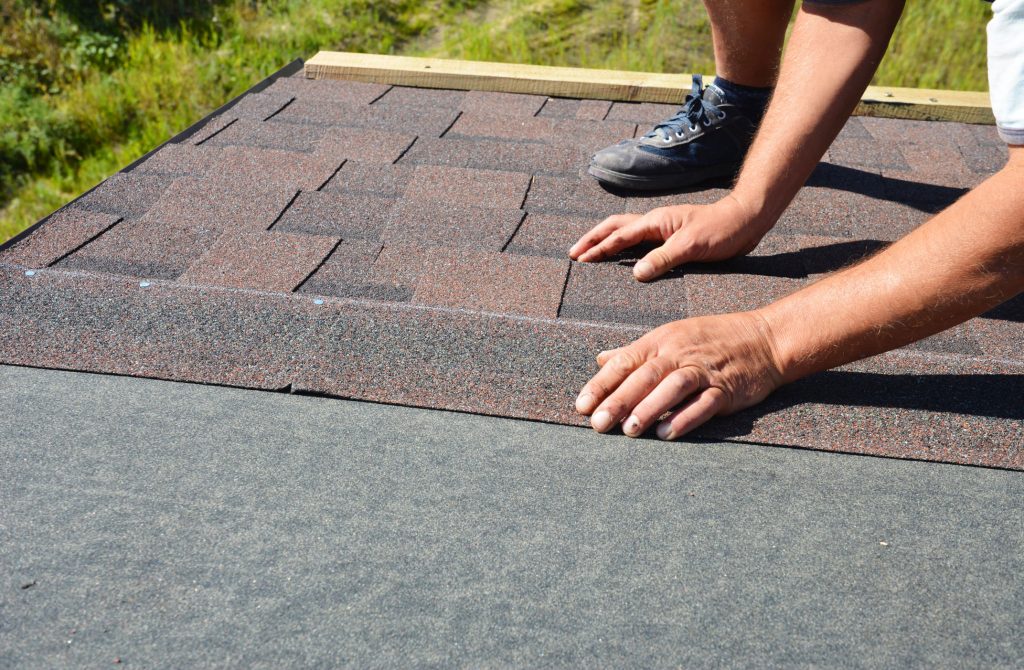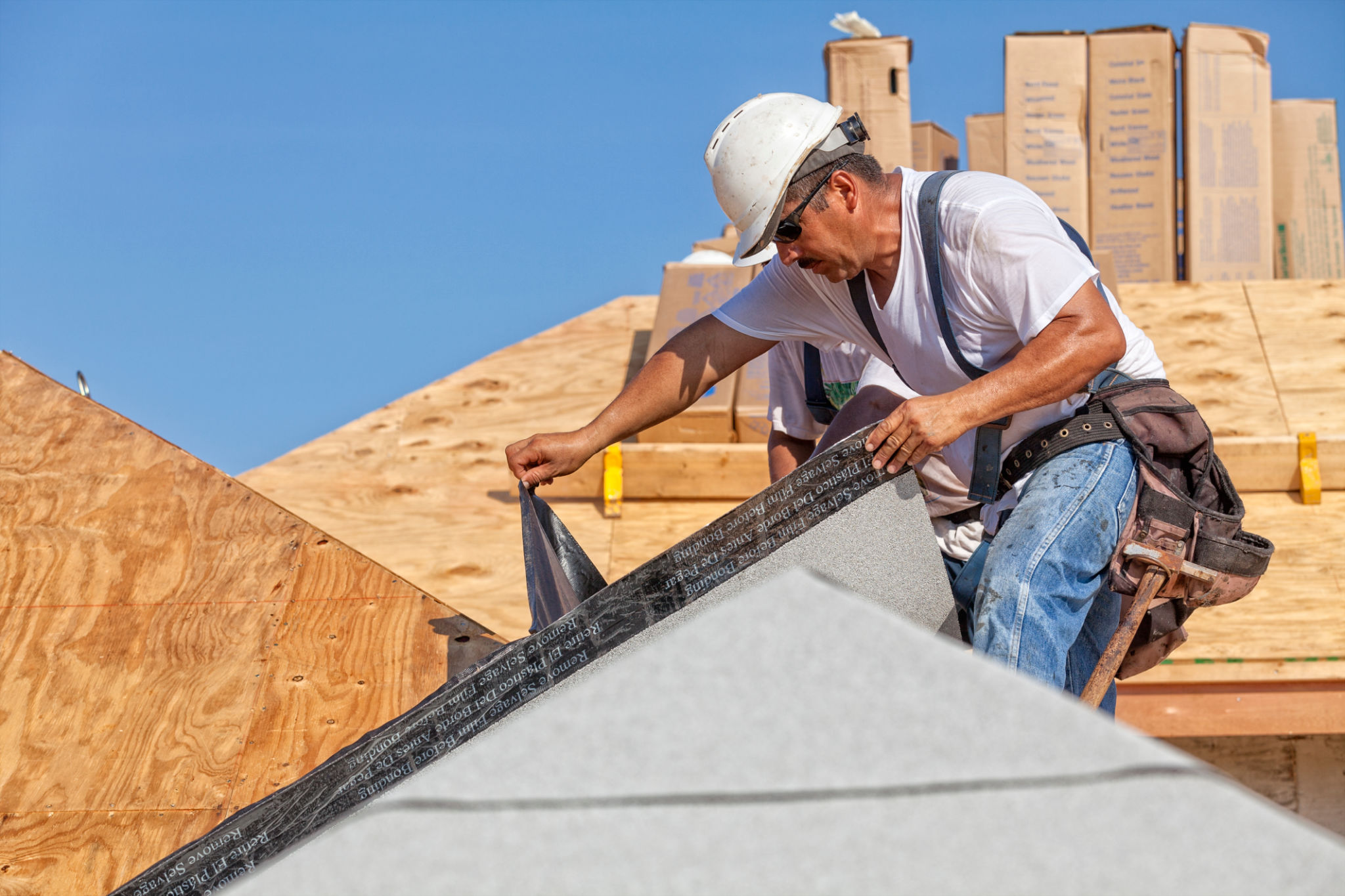Roofing underlayment isn’t often evident, and you might not ever hear of it! But, it’s an essential part of every roofing system.
Roofing underneath is waterproof and a waterproof membrane that serves as a barrier against snow, rain, and winds. It also helps to keep moisture out. Roofers McKinney put it directly onto your roof deck, and then underneath the other roofing materials.
What is the reason you need Roofing Underlayment?
A lot of roof regions require roofing underlayment. The fact is, shingles are not enough to safeguard your roof deck by themselves.
Be aware that shingles aren’t completely sealed at every corner and strong winds could lift them. In time, they’ll are prone to breaking and the heat from an attic that is not ventilated can cause heat to burn them. They’re also prone to tearing or infiltration by rain driven by winds.
Shingles reflect the sun’s rays They also resist wind and block rain, but they’re just the initial line of defense. So, in order to safeguard your home, your roofing system must be underlayment.
Different types of Roofing Underlayment
1. Asphalt-Saturated Felt:
Many different mixtures of natural fibers, along with bitumen, polyester or asphalt comprise this kind of underlayment known as “felt paper” or “tar paper”. It usually has the form of a base mat or elastic base layer. In addition, the manufacturers make it waterproof by covering the surface with asphalt.
The advantages of asphalt-saturated felt
- It is available in various thicknesses, which means it can adjust to the local weather needs. There is a range of choices due to their various resistances to weather exposure.
- It’s cheaper than other materials.
- It is a great barrier to seepage.
- It is possible to use tools that are common to install it
Advantages of felt containing asphalt
- It can be very heavy, especially in the event that you coat it in sufficient quantities to be effective in more extreme climates.
- Installation can be challenging because it weighs more than other options.
- It may crack and break when exposed to cold temperatures.
- The volatile components can be destroyed when exposed to temperatures. This means that the underlayment may take in moisture and then split.

2. Synthetic Underlayment:
Manufacturers create synthetic underlayments that can be laid across the entire roof deck. They then saturate it with asphalt and add fiberglass that gives them greater tear-resistance and stability.
The advantages of synthetic underlayment
- It’s a lightweight and efficient water barrier that is light and effective. Therefore, it won’t make a huge difference to your roof
- It’s tear-resistant when exposed to extreme winds.
- It doesn’t absorb water. It is therefore resistant to the growth of fungal and mold
- It will be able to maintain its integrity regardless of exposure to cold temperatures and won’t break down as fast as other types of clothing.
Advantages of synthetic overlays
- It is generally more expensive than asphalt-saturated Felt.
- You will require more tools and skills to install properly
Today, the majority of roofing contractors prefer using synthetic underlayment. Also, top-quality synthetic underlayment, such as The Diamond Deck (TM) has scrim reinforcement to provide additional resistance to slip.
3. Rubberized Asphalt:
Rubberized asphalt underlayment is made up of higher proportions of asphalt as well as rubber polymers, which makes it water-proof. It usually has an adhesive backing with an insulating membrane that roofers take off prior to installation. The backing provides a waterproof layer between the underlayment as well as the roof deck.
It is recommended to place this underlayment at the valleys and areas that are susceptible to leakage, like roof protrusions.
Benefits of rubberized asphalt
- It is a fantastic way of safeguarding your roof from damage caused by water
- The waterproof roofing underlayment on the roof eaves is beneficial in regions where winter can be extreme. The underlayment protects the edges of your roof deck against damage caused by water.
- It offers a lot more resistance to cold and heat than asphalt-saturated felt.
- They last for a long time once installed
- Are you required to wait until you can install your primary roof cover? It’s not a problem because this material is able to be exposed to the elements of weather for up to 180 days with no serious damage.
The disadvantages of rubberized asphalt are:
- The only downside to this type of underlayment is the cost as it will require an investment that is higher.
What to Consider When Choosing Roofing and the right roofing underlayment for your Roof
When you’re deciding on the right underlayment, it is important to take into consideration the price. Determining your budget first allows you to easily determine which options for underlayment you’re able to consider.
Of course, determining the most suitable roof kind is equally important.
In particular, because synthetic underlayment is more resistant to heat, it can be a great choice for metal roofing. For instance, roofing felt underlayment can be used with the traditional asphalt shingle roof.
The most significant part of the issue is that you didn’t know from where the water got into your home or the roof. The watermarks on the ceiling can be seen but you need to be extremely difficult to locate these areas.
You should also be aware of the surroundings in which you live as well as the climate. The type of underlayment you choose should be suitable for the climate of your area.
Do you need a roof replacement?
Reach out to McKinney Best Roofing and Repairs serving the residents of McKinney and neighboring areas.
You can contact us via our website for a quote or schedule an appointment for a no-cost, in-home consultation. There are even answers to any roofing concerns. We invite you to inquire about our world-class warranty of 50 years.
